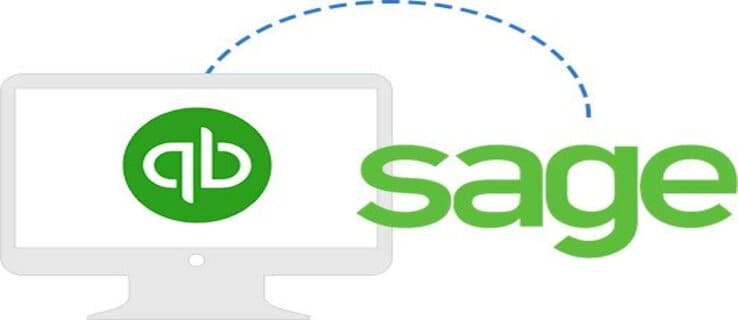Effective financial management is the backbone of any successful business. As companies grow and evolve, so do their financial needs.
QuickBooks has long been a trusted choice for small and medium-sized businesses.
However, as your business expands, you may find that QuickBooks has limitations that hinder your growth potential.

This is where Sage Intacct offers advanced financial capabilities to help take your business to the next level.
In this article, we’ll explore four compelling benefits of transitioning from QuickBooks to Sage Intacct, shedding light on how this move can revolutionize your financial management and decision-making processes.
Enhanced Scalability
One of the most significant limitations of QuickBooks is its scalability—or lack thereof.
While QuickBooks is an excellent choice for startups and small businesses, it may struggle to keep up as your company grows.
QuickBooks might become slow and cumbersome as your customer base, transactions, and data volume increase, leading to inefficiencies in your financial processes.
On the other hand, Sage Intacct offers seamless scalability, making it suitable for businesses of all sizes.
Whether you’re a rapidly growing startup or a well-established enterprise, Sage Intacct can adapt to your evolving needs.
It provides the flexibility to handle increased data loads, transactions, and users without compromising performance.
Advanced Reporting and Analytics
In today’s data-driven business landscape, having access to in-depth financial insights is critical.
QuickBooks provides basic financial reporting capabilities but requires more sophisticated analysis and reporting.
This can hinder your ability to make informed decisions and develop effective financial strategies.
Sage Intacct boasts powerful reporting and analytics tools that can transform how you manage your finances.
Customizable dashboards and real-time data access give you a comprehensive view of your financial performance.
This empowers data-driven decision-making, enabling you to identify trends, forecast accurately, and strategize effectively.
Automation and Efficiency
QuickBooks relies heavily on manual data entry and processes. While it might sufficient for simpler financial tasks, it can be incredibly time-consuming and error-prone as your business grows.
Manually handling tasks like invoicing, expense tracking, and reconciliation can lead to inefficiencies and costly mistakes.
Sage Intacct addresses this issue with robust automation capabilities. It streamlines repetitive financial tasks, reducing the risk of errors and saving you valuable time.
For example, it can automate the generation of invoices, payment reminders, and expense approvals.
This automation boosts efficiency and lets your finance team focus on more strategic activities.
Integration and Collaboration
Integration is paramount in an era where businesses rely on multiple software solutions to manage various aspects of their operations.
QuickBooks has certain limitations when it comes to integrating with other tools and platforms.
This lack of integration can result in disconnected workflows, data silos, and a lack of collaboration across departments.
Sage Intacct takes a different approach. It offers a wide range of integration options, allowing you to connect it seamlessly with other business-critical applications line NetSuite.
This type of integration would require a NetSuite implementation guide to be used to ensure that data flows smoothly between departments.
For example, your sales team can access up-to-date financial data, your HR department can streamline payroll processes, and your management team can make strategic decisions based on real-time insights.
Steps to Transition and Implement
If you’re considering a switch from QuickBooks to Sage Intacct, here are the key steps to ensure a smooth transition:
Evaluating Your Current Financial Management Needs: Start by assessing your current financial processes and identifying pain points. Determine what specific features and capabilities you require.
Choosing the Right Sage Intacct Package: Sage Intacct offers different packages tailored to various business needs. Select the one that aligns with your requirements and budget.
Planning Data Migration and Training: Proper planning is crucial. Ensure that your data is migrated accurately and your team receives comprehensive training to maximize the benefits of Sage Intacct.
Integration Considerations: Explore the integration options that Sage Intacct offers. Identify your current tools and ensure they integrate seamlessly with your new financial system.
Testing, Optimization, and Going Live: Before fully adopting Sage Intacct, thoroughly test the system to identify any issues. Optimize configurations and processes as needed. Once everything is in order, you can confidently go live.
Cost Considerations
It’s essential to address the investment required for the transition. While Sage Intacct may involve an initial cost, consider the long-term savings and return on investment.
Factor in the efficiency gains, reduced manual labor, and improved decision-making capabilities. These advantages often outweigh the upfront expenses.
Conclusion
In conclusion, switching from QuickBooks to Sage Intacct can be a game-changer for your business.
The enhanced scalability, advanced reporting and analytics, automation, and integration capabilities can significantly improve financial management.
Real-life case studies demonstrate the transformative power of Sage Intacct, while careful planning and cost considerations ensure a successful transition.
If you’re looking to take your financial management to the next level, it’s time to explore the benefits of Sage Intacct.
Make an informed decision that aligns with your business’s growth and financial aspirations.